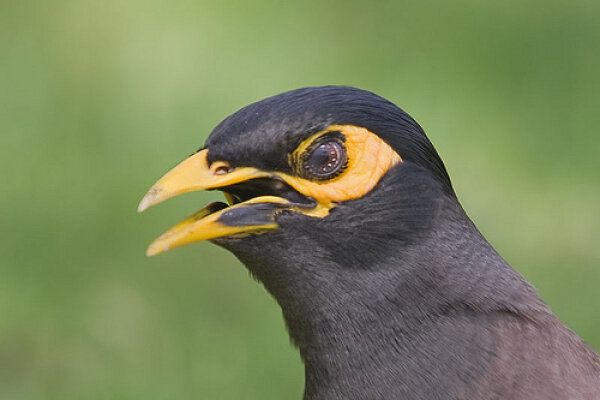2016-10-24

Within a few hundred years, humans have changed vast natural habitats into cities. How do non-human animals cope with these changes? We know that some species disappear, while others exploit the benefits of this new ecology. Possibly, changes induced by urbanized environments cause a novel selection pressure on cognitive abilities. Scientists from Newcastle (Australia), Vienna, and Bochum studied this hypothesis in urban and rural common mynas using a standard visual discrimination task followed by a reversal learning phase. They not only compared the speed of learning but also how quickly each bird progressed through different stages of learning of reversal learning. Based on their reliance on very different food resources, they expected urban mynas to learn and reversal learn more quickly. When quantified from first presentation to criterion achievement, however, urban mynas took more 20-trial blocks to learn the initial discrimination, as well as the reversed contingency, than rural mynas. More detailed analyses at the level of stage revealed that this was because urban mynas explored the novel cue-outcome contingencies for longer, and despite transitioning faster through subsequent acquisition, remained overall slower than rural females. These findings draw attention to fine adjustments in learning strategies in response to urbanization and caution against interpreting the speed to learn a task too easily as a reflection of cognitive ability.

Within a few hundred years, humans have changed vast natural habitats into cities. How do non-human animals cope with these changes? We know that some species disappear, while others exploit the benefits of this new ecology. Possibly, changes induced by urbanized environments cause a novel selection pressure on cognitive abilities. Scientists from Newcastle (Australia), Vienna, and Bochum studied this hypothesis in urban and rural common mynas using a standard visual discrimination task followed by a reversal learning phase. They not only compared the speed of learning but also how quickly each bird progressed through different stages of learning of reversal learning. Based on their reliance on very different food resources, they expected urban mynas to learn and reversal learn more quickly. When quantified from first presentation to criterion achievement, however, urban mynas took more 20-trial blocks to learn the initial discrimination, as well as the reversed contingency, than rural mynas. More detailed analyses at the level of stage revealed that this was because urban mynas explored the novel cue-outcome contingencies for longer, and despite transitioning faster through subsequent acquisition, remained overall slower than rural females. These findings draw attention to fine adjustments in learning strategies in response to urbanization and caution against interpreting the speed to learn a task too easily as a reflection of cognitive ability.